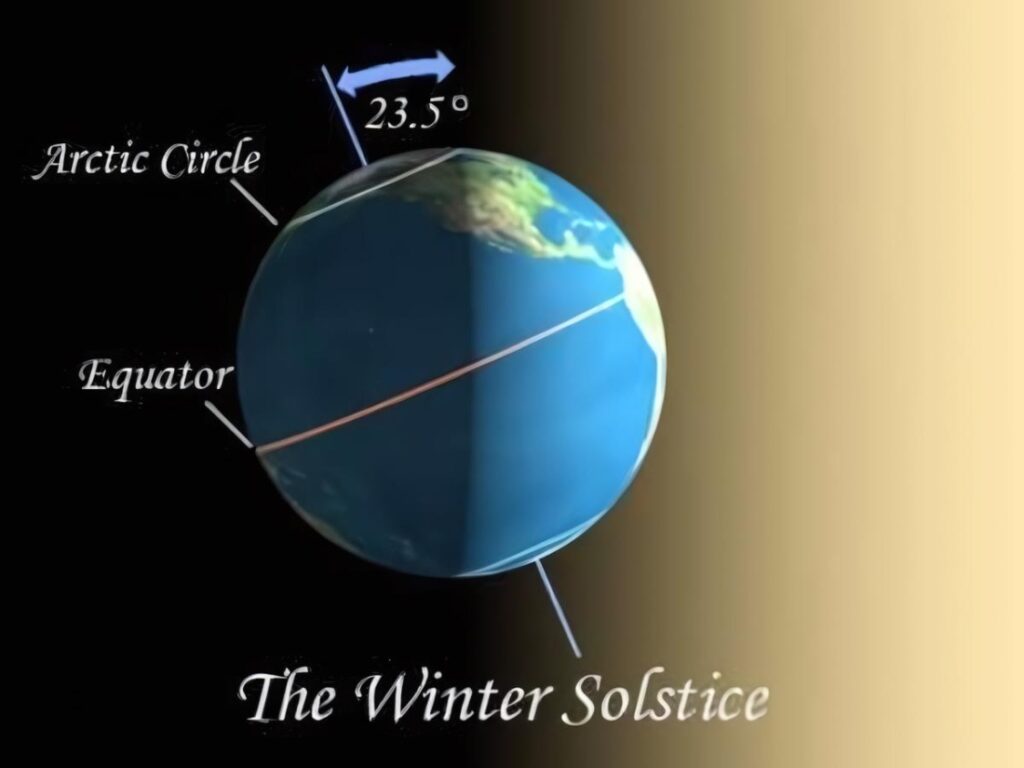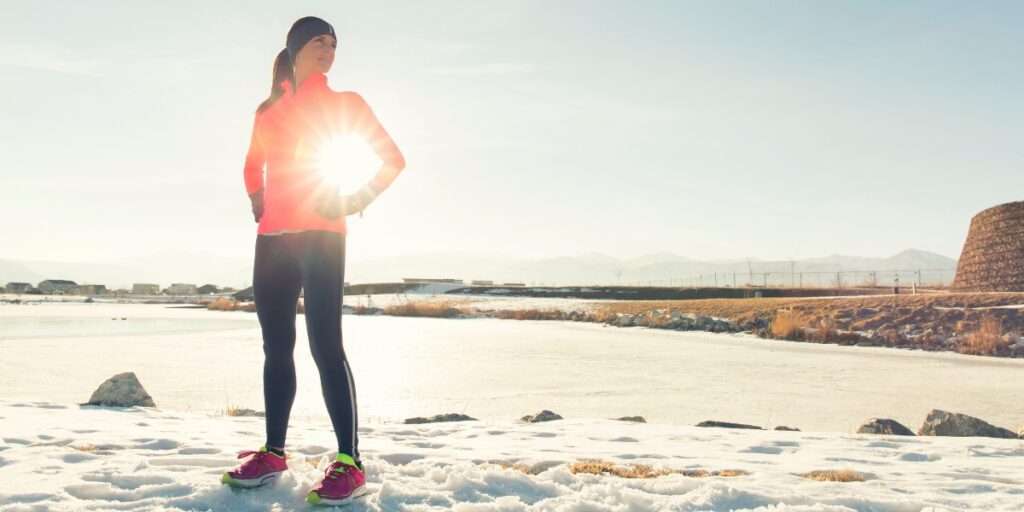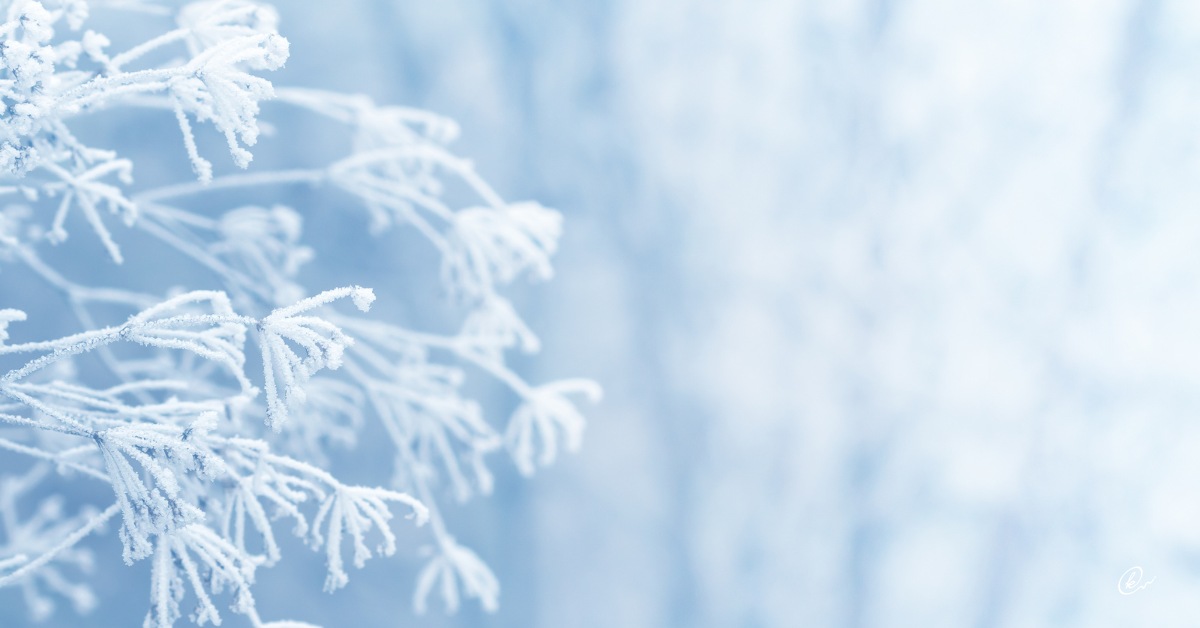Winter is the coldest season of the year in temperate climates, between autumn and spring. It is caused by the axis of the Earth in the respective hemisphere being oriented away from the Sun. Different cultures define different dates as the start of winter, and some use a definition based on weather, but when it is winter in the Northern Hemisphere, it is summer in the Southern Hemisphere, and vice versa. In many regions, winter is associated with snow and freezing temperatures. At the winter solstice, the days are the shortest, and the nights are the longest, with days lengthening as the season progresses after the solstice.
The tilt of the Earth’s axis relative to its orbital plane plays a big role in the weather. The Earth is tilted at an angle of 23.44° to the plane of its orbit, and this causes different latitudes on the Earth to directly face the Sun as the Earth moves through its orbit. It is this variation that primarily brings about the seasons. When it is winter in the Northern Hemisphere, the Southern Hemisphere faces the Sun more directly and thus experiences warmer temperatures than the Northern Hemisphere. Conversely, winter in the Southern Hemisphere occurs when the Northern Hemisphere is tilted more toward the Sun.
From the perspective of an observer on the Earth, the winter Sun has a lower maximum altitude in the sky than the summer Sun.
During winter in either hemisphere, the lower altitude of the Sun causes the sunlight to hit that hemisphere at an oblique angle. In regions experiencing winter, the same amount of solar radiation is spread out over a larger area. This effect is compounded by the larger distance that the light must travel through the atmosphere, allowing the atmosphere to dissipate more heat. Compared with these effects, the changes in the distance of the Earth from the Sun are negligible.
Meteorological winter is the method of measuring the winter season used by meteorologists based on “sensible weather patterns” for record-keeping purposes, so the start of meteorological winter can change depending on how far north one lives. Winter is often defined by meteorologists as the three calendar months with the lowest average temperatures. This corresponds to the months of December, January, and February in the Northern Hemisphere and June, July, and August in the Southern Hemisphere.
The coldest average temperatures of the season are typically experienced in January in the Northern hemisphere and in June or July in the Southern hemisphere. Night time predominates the winter season, and in some regions, it has the highest rate of precipitation as well as prolonged dampness because of permanent snow cover or high precipitation rates coupled with low temperatures, precluding evaporation. Blizzards often develop and cause many delays. Accumulations of snow and ice are commonly associated with winter in the Northern Hemisphere due to the large land masses there.
In the Southern Hemisphere, the more maritime climate and the relative lack of land south of 40°S make the winters milder; thus, snow and ice are less common in inhabited regions of the Southern Hemisphere. In this region, snow occurs every year in elevated regions such as the Andes, the Great Dividing Range in Australia, and the mountains of New Zealand, and also occurs in the southerly Patagonia region of South America. It snows year-round in Antarctica.
Some authorities define the period of winter based on astronomical fixed points regardless of weather conditions. One version of this definition is that winter begins at the winter solstice and ends at the vernal equinox.

Astronomically, the winter solstice, being the day of the year which has the fewest hours of daylight, ought to be the middle of the season. In the USA and Canada (sometimes in Britain), the season is regarded as beginning at the solstice and ending on the following equinox. The system of seasons is exclusively based on the length of days. The three-month period of the shortest days and weakest solar radiation occurs during November, December, and January in the Northern Hemisphere and May through July in the Southern Hemisphere.
Yet, many mainland European countries also tend to recognize Martinmas (St. Martin’s Day, November 11th) as the first calendar day of winter. Valentine’s Day (February 14th) is recognized by some countries as heralding the first rites of spring.
The three-month period associated with the coldest average temperatures typically begins somewhere in late November or early December in the Northern Hemisphere and lasts through late February or early March. This “thermological winter” is earlier than the solstice delimited definition but later than the daylight (Celtic) definition.
Cultural influences may have led to the winter season being perceived as beginning earlier in recent years, although high-latitude countries like Canada are usually well into their real winters before the December solstice.
Many annual plants require winter cold to complete their life cycle; this is called vernalization. Many small perennials profit from the insulating effects of snow by being buried in it. Larger plants, in particular deciduous trees, let their upper part go dormant, but their roots are still protected by the snow layer. Few plants bloom in the winter, one exception being the flowering plum, which flowers in time for Chinese New Year.
Even the animals have developed adaptations for winter. Many birds migrate to warmer climates. There are animals that hibernate during the winter and only when it is warmer, just as there are those that store away food for the winter and survive on that instead of hibernating.
During the winter, many people enjoy outdoor winter sports such as skiing, ice skating, ice hockey (on frozen lakes and ponds), sledding, and tobogganing. When going outside, though, in the winter, it is imperative to wear hats, gloves/mittens, scarves, warm winter jackets, and more, which are standard. Otherwise, you run the risk of frostbite, hypothermia, or worse. This time of year is the only season that people wear more clothing than any other time of year. You can remain fashionable even bundled up.

I remember my brother and I ice skating on the lakes in Brightwaters when we were growing up, and later on, he and his friends played ice hockey on the same lakes. And there was plenty of time on weekends in the winter for sleigh riding and tobogganing. Plus, we all had to help shove out the driveway to the house as well as paths to the house so that we could get in and out. Good exercise and fresh air. It was also fun making snowmen and snowwomen, igloos, and doing angels in the snow.





